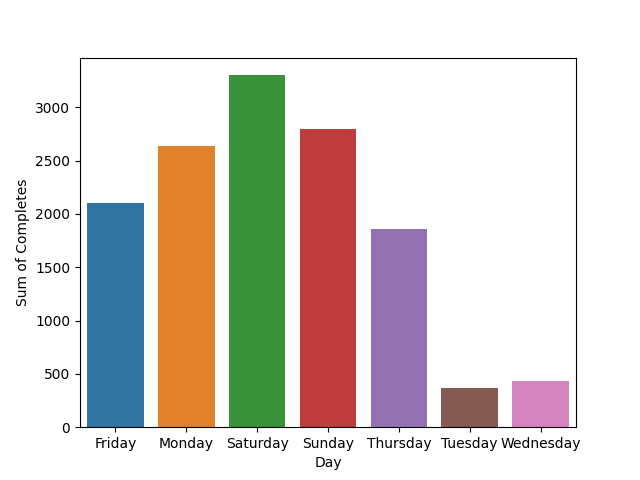The primary goal of this project is to leverage historical data on UberEats deliveries to develop a forecasting model that can predict future demand. By analyzing patterns and trends in the historical data, we aim to generate accurate forecasts for the number of delivery requests expected in the future.
The dataset used for this project contains information such as the date, hour, number of requests received, number of requests completed, number of hours drivers were on duty, number of hours drivers were on trip, predicted ETA, actual ETA, number of delivered products, and total products available. These variables provide valuable insights into the demand patterns and various factors influencing delivery services.
The dataset contains comprehensive data about UberEats deliveries over a period of one month, with distinct information for three different time periods each day: 11:00, 12:00 and 13:00.
Upon thorough analysis of the dataset, it has been determined that the time period with the highest number of deliveries is at 12:00, indicating a peak in demand during that particular hour. This finding suggests that customers are more inclined to place UberEats orders around midday, possibly due to lunchtime preferences or convenience.
Furthermore, the data reveals the days of the week with the highest delivery volumes in descending order.
The analysis demonstrates that Saturday has the highest number of deliveries, followed by Sunday, Monday, Friday, Thursday, Wednesday, and Tuesday. This ranking provides valuable insights into the weekly delivery patterns, allowing businesses to allocate resources effectively and optimize their operations accordingly.
For this project, three types of prediction models were used:
Classifiers
The classifier model was utilized to predict a binary target variable. The target variable indicates whether the completion rate of deliveries is higher than the average value. This model aims to categorize each delivery based on its completion rate, classifying it as either above average (1) or below average (0). The classifier model utilizes machine learning algorithms, including Support Vector Machine (SVM), Random Forest, Ada Boost, Decision Tree and Quadratic Discriminant Analysis.
Linear Regression
Linear regression was employed as a prediction model to estimate the number of requests. This model assumes a linear relationship between the independent variables (such as time, day, or other relevant factors) and the number of requests. By analyzing the historical UberEats delivery data, the linear regression model determines the coefficients that best fit the data, allowing for the prediction of the number of requests for future time periods.
Recurrent Neural Network
The RNN (Recurrent Neural Network) model was used to predict the number of requests. RNNs are a type of neural network architecture specifically designed for sequential data, making them well-suited for time series analysis. By leveraging the temporal dependencies and patterns in the UberEats delivery data, the RNN model can capture the time-based fluctuations and make predictions for future time periods. This model can consider the previous time periods' data and learn the long-term dependencies, enabling accurate forecasting of the number of requests.
To set up the model, please follow the instructions below:
- Clone the repository and set the directory
git clone https://github.com/CescaNeri/UberDS.git && cd UberDS- Create and activate a virtual environment
python -m venv env
.\env\Scripts\activate- Install the required dependencies
pip install -r requirements.txt- Run the data_exploration.py script to gather insights about the dataset
python data_exploration.py- Run the prediction_model.py script to execute the models
python prediction_model.pyThis script will train and execute the prediction model based on the chosen algorithm (classifier, linear regression, or RNN). It will utilize the prepared data to make predictions or generate forecasts, depending on the specific model implemented.
